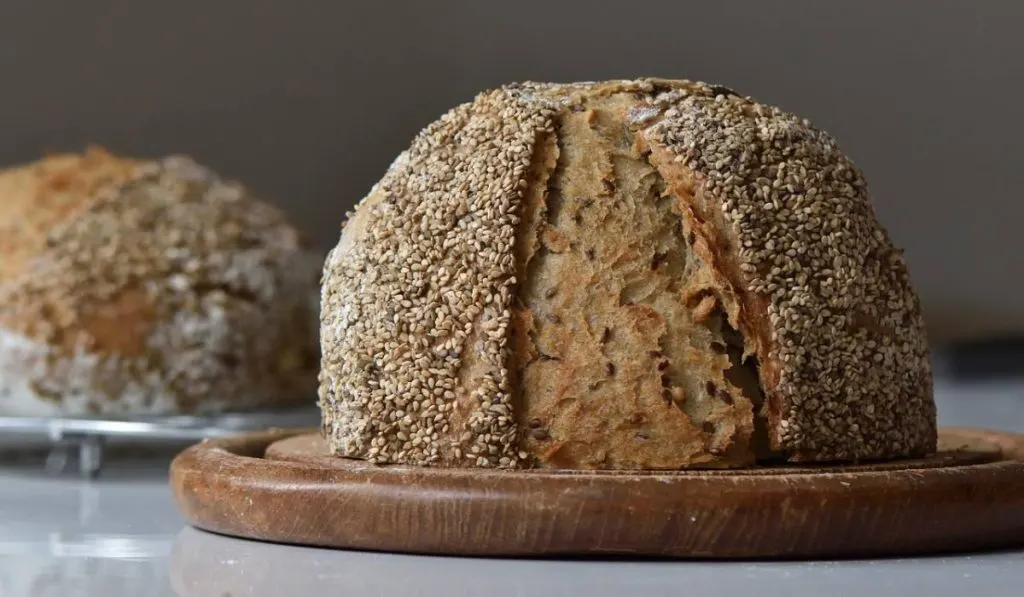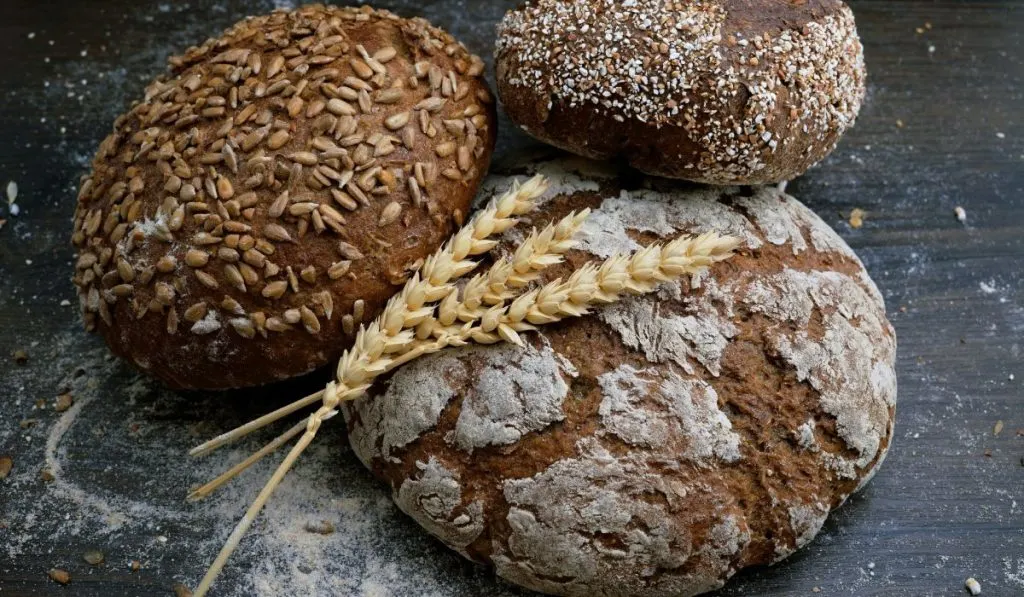
The Ancient Secret to Better Sourdough
Sourdough enthusiasts know there’s nothing like the taste of a perfectly baked loaf – the crispy crust, the chewy crumb, and that unmistakable tang. But if you think you’ve tasted all there is to sourdough, think again. Introducing Sourdough Bread with Ancient Grains – an old-world twist to your favorite artisanal loaf.
Modern bread often falls flat in flavor and nutrition, but ancient grains are making a comeback to change all that. Imagine sourdough with added depth, nutty undertones, and a boost of nutrients that not only enhances flavor but also makes it better for you. Intrigued? You should be.
TL;DR
- Ancient grains add rich flavor, texture, and nutrition to traditional sourdough bread.
- Grains like spelt, einkorn, emmer, and kamut are packed with protein, fiber, and essential minerals.
- Making sourdough bread with ancient grains is simple yet yields a complex, earthy taste.
- These grains are often easier to digest than modern wheat, catering to those with gluten sensitivities.
- Ancient grain sourdough is a creative twist to elevate both your baking and eating experience.
What Makes Ancient Grains “Ancient”?
Before diving into the benefits, let’s clarify what we mean by “ancient grains.” Unlike modern wheat, which has been selectively bred for mass production and uniformity, ancient grains are varieties that have been unchanged for thousands of years. These include:
- Spelt: Known for its nutty flavor, high protein content, and slightly sweet taste.
- Einkorn: The oldest known wheat variety; it’s rich in antioxidants and easier to digest.
- Emmer (Farro): A chewy, nutty grain that dates back to ancient Egypt and is loaded with protein and fiber.
- Kamut: Larger, plumper grains that add a buttery flavor and chewy texture.
These grains add flavor, texture, and nutritional benefits to your sourdough that you simply can’t get from refined wheat flour.
Why Choose Sourdough Bread with Ancient Grains?
1. Flavor Explosion
Sourdough bread already has a unique taste due to the fermentation process, but add ancient grains, and you open up a whole new dimension of flavor. Picture a loaf with nutty notes, subtle hints of sweetness, and a hearty texture that turns your everyday sourdough into an artisanal masterpiece.
2. Nutrient-Rich Bread That’s Good for You
Ancient grains are packed with nutrients compared to modern wheat:
- Protein Powerhouse: Grains like spelt and emmer contain higher protein levels, making each bite more filling.
- Rich in Fiber: Aids digestion, promotes satiety, and supports gut health.
- Essential Minerals: High levels of magnesium, iron, and zinc boost your immune system and energy levels.
3. Easier to Digest for Gluten-Sensitive Folks
Modern wheat can be challenging for some to digest, but many find ancient grains easier on the stomach. Combined with sourdough’s natural fermentation, which helps break down gluten, ancient grain sourdough bread is often more digestible – even for those with mild gluten sensitivities.
Pro Tip: While sourdough with ancient grains is gentler on your gut, it’s not gluten-free. Those with Celiac disease should still avoid it.
The Art of Baking Sourdough with Ancient Grains
1. Choosing Your Ancient Grains
The first step is deciding which grains to include in your dough. You can use a single type of grain, like spelt, or mix different ancient grains for a more complex taste and texture. Each grain has unique properties, so experiment to find the balance you love.
2. Adjusting Hydration Levels
Ancient grains absorb water differently than modern wheat flour. Generally, they require more water, so don’t be alarmed if your dough feels a bit wetter than usual. This is especially true for spelt and einkorn, which are “thirstier” grains.
Insider Insight: Ancient grains like einkorn are lower in gluten, making the dough more fragile. Handle it with care, and don’t be afraid of a little stickiness – it will work out in the end.
3. Longer Fermentation for Deeper Flavor
Ancient grain sourdough benefits from longer fermentation. This allows the flavors to fully develop and helps break down any antinutrients, making the bread more digestible. Aim for a slow, cold ferment in the refrigerator overnight, or up to 24 hours for a rich, deep taste.

Tasting Notes: What to Expect
A Texture You Can Savor
Ancient grain sourdough has a chewy, satisfying crumb that’s slightly denser than your typical loaf. The added fiber and protein content provide a hearty bite that pairs beautifully with the bread’s natural tang.
A Flavor That Stands Out
If you’ve only had regular sourdough, be prepared for a flavor upgrade. Spelt sourdough will bring a nutty, slightly sweet taste, while emmer imparts a rich, earthy flavor. Kamut adds buttery notes, making your bread taste almost indulgent, even though it’s a healthy choice.
Tips for Perfecting Ancient Grain Sourdough Bread
- Start with a Blend: If you’re new to ancient grains, start by substituting just 20-30% of your regular flour with ancient grain flour. Gradually increase the percentage as you become familiar with the different textures and hydration needs.
- Use Freshly Milled Flour: Freshly milled ancient grain flour not only tastes better but retains more nutrients than store-bought, pre-ground varieties.
- Don’t Rush the Process: Patience is key with sourdough. The long fermentation process is what gives it that complex flavor and easier digestibility.
- Experiment and Have Fun: There are no hard and fast rules. Play around with different grains, hydration levels, and fermentation times until you find the perfect loaf for you.
Sandra’s Favorite Combo: A mix of 50% bread flour, 25% spelt, and 25% einkorn creates a loaf that’s soft yet robust, with a flavor profile that’s nutty, sweet, and delightfully tangy.
Pairing Ideas: Making the Most of Ancient Grain Sourdough
Now that you’ve baked your loaf, it’s time to savor every bite. Ancient grain sourdough, with its unique blend of spelt, emmer, and other heritage grains, offers a hearty, earthy flavor that pairs beautifully with a range of toppings. Whether you’re enjoying it as a simple snack or a gourmet meal, these pairings will elevate every slice.
Olive Oil & Sea Salt Dip
This classic combination highlights the nutty, robust flavors of ancient grains. Simply pour some high-quality extra virgin olive oil into a small dish, add a sprinkle of sea salt, and dip your warm sourdough into it. The peppery notes of the oil complement the sourdough’s deep flavor, while the sea salt adds a subtle crunch that enhances its earthy undertones.
Avocado & Soft-Boiled Egg
Creamy avocado pairs beautifully with the chewy, dense texture of ancient grain sourdough. Spread ripe avocado onto a toasted slice, and top it with a perfectly soft-boiled egg for a luxurious bite. Sprinkle with chili flakes, lemon juice, and a pinch of sea salt for a rich, flavorful experience that balances the bread’s nuttiness with smooth textures.
Herbed Ricotta & Fresh Tomatoes
For a fresh, summery delight, spread a layer of herbed ricotta (mixed with fresh basil, parsley, or thyme) on your sourdough, and top with juicy slices of tomatoes. The creaminess of the ricotta contrasts with the bread’s hearty chew, while the acidity of the tomatoes brightens up the earthy flavors of the grains. A drizzle of balsamic glaze makes it even more delightful.
Honey & Butter
If you’re craving something sweet, a spread of softened butter with a drizzle of honey is a perfect match for ancient grain sourdough. The sweetness of the honey brings out the natural flavors of the grains without overpowering them, and the butter adds a smooth, rich mouthfeel. Perfect for a morning treat or an afternoon pick-me-up, this pairing is simple yet indulgent.
These versatile pairing ideas bring out the best in ancient grain sourdough, making each slice a memorable experience!
Conclusion: A Better Bread, a Better Experience
Incorporating ancient grains into your sourdough bread brings a taste of history into your kitchen. It’s a loaf packed with flavor, texture, and nutrients – one that not only feeds your body but also enriches your palate. The world of sourdough is vast and diverse, and by adding ancient grains, you open yourself up to new possibilities and culinary adventures.
So, are you ready to try sourdough bread with ancient grains? Your next loaf could be your best one yet.
FAQs
What are the best ancient grains to use in sourdough?
Spelt, einkorn, emmer, and kamut are great choices. Each adds its unique flavor and nutritional benefits to the bread.
How does ancient grain sourdough differ in taste from regular sourdough?
Ancient grains bring nuttier, earthier, and sometimes sweeter flavors, offering a more complex taste than regular sourdough.
Can I make 100% ancient grain sourdough?
Yes, but be prepared for a denser loaf and a stickier dough. Many bakers prefer to mix ancient grains with bread flour for better structure.
Is sourdough with ancient grains gluten-free?
No, ancient grains still contain gluten, although they may be easier to digest for some people compared to modern wheat.
What’s the best way to store ancient grain sourdough?
Keep your loaf in a bread bag or wrapped in a clean kitchen towel at room temperature. For longer storage, slice and freeze the bread.
Join Us and Transform >
Don’t Be an Amateur! Master the Art of Sourdough Bread!




Leave a comment